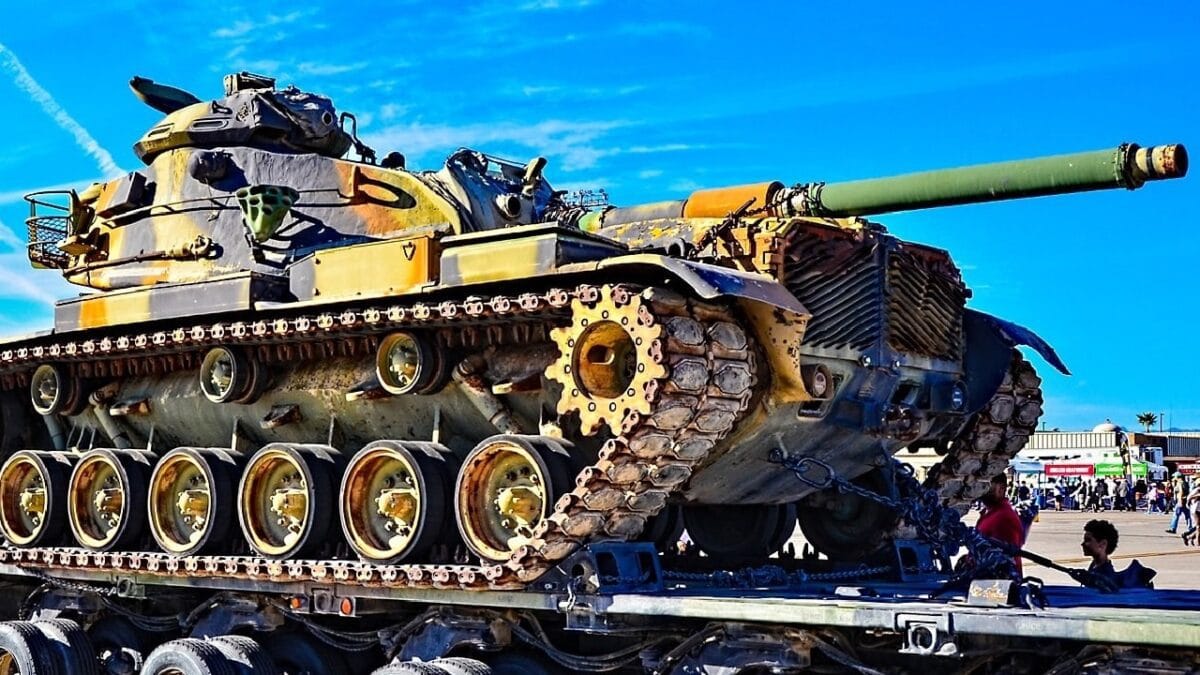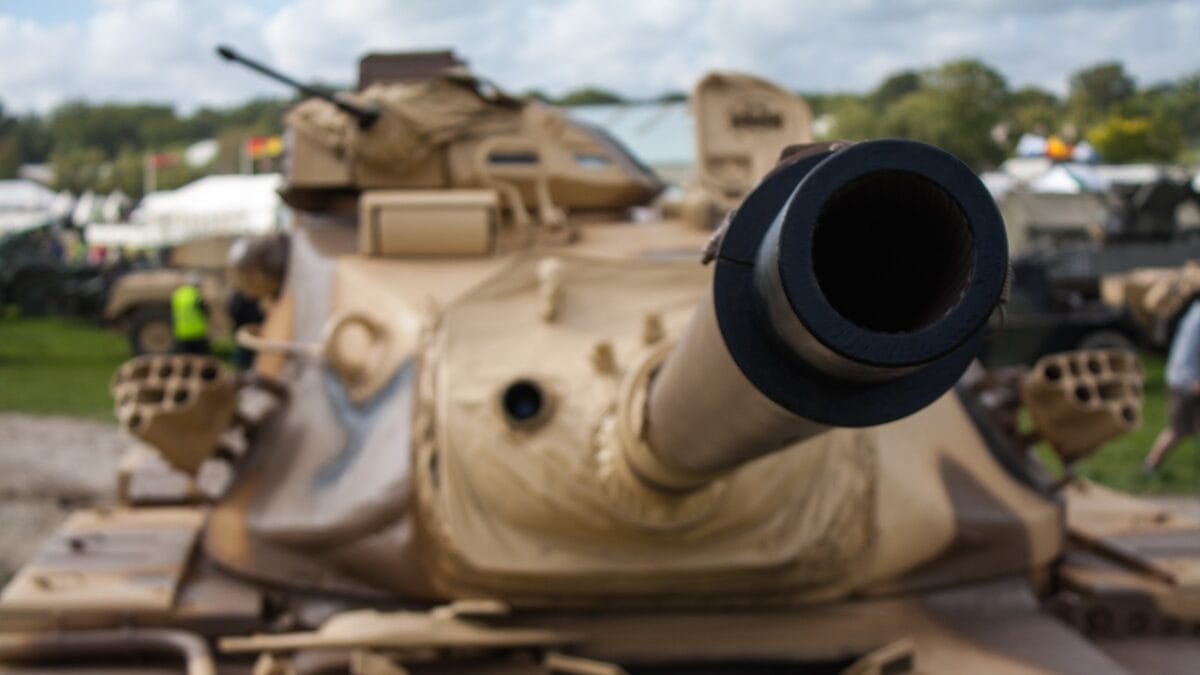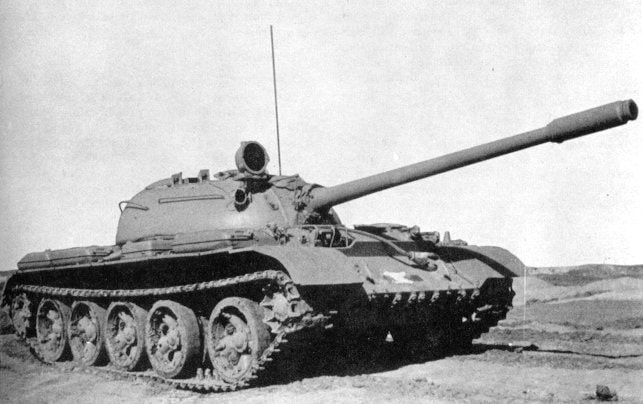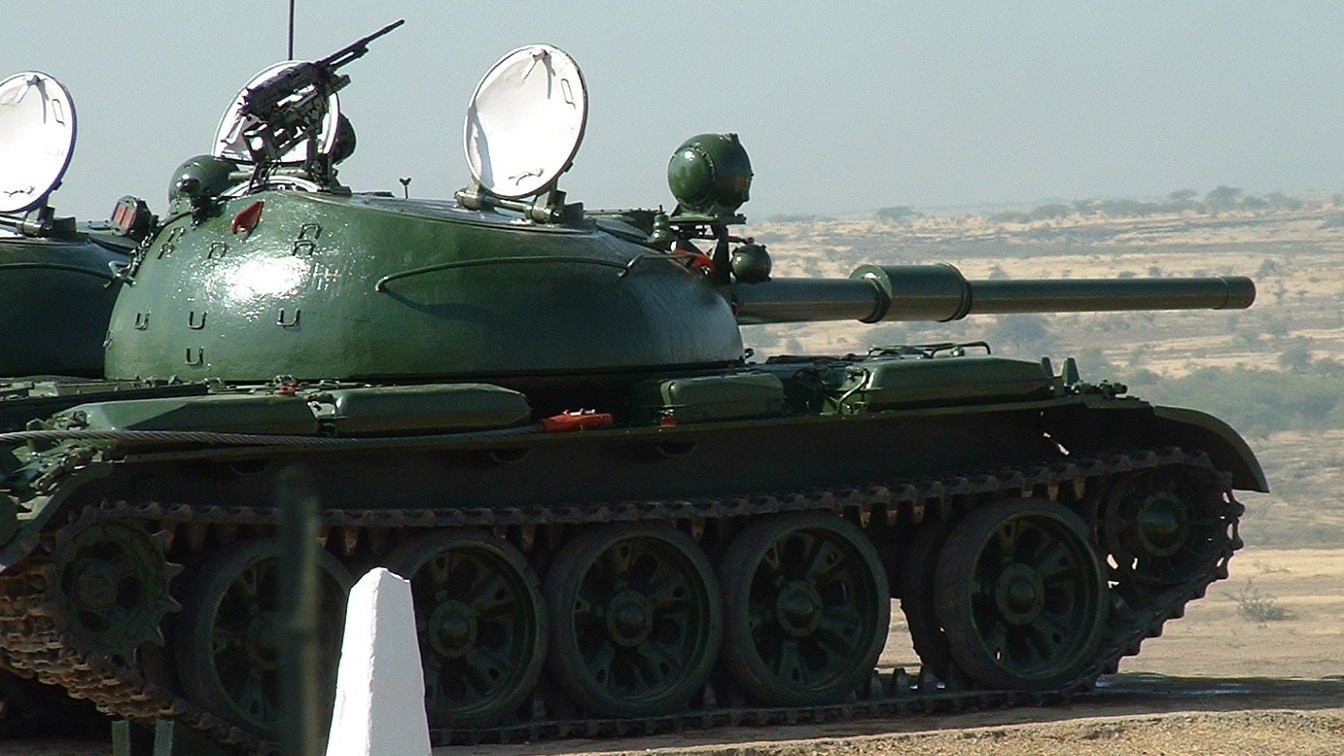A few weeks ago, I attended an event at the Victims of Communism Museum in Washington, DC, titled “Remembering the Hungarian Freedom Fighters of 1956.” Afterward, VOC President Andrew Bremberg encouraged me to write an article or two for 19FortyFive on topics pertaining to the Hungarian Revolution, and I was more than happy to oblige. I started off with a weapon used by both sides in the conflict – freedom fighters and oppressors alike – the PPSh-41 “Papasha” submachine gun. This time, I’ll be discussing a weapons system used solely by the bad guys in that revolution, as well as during a slew of other conflicts: the Soviet T-54/55 tank series.
(Subscribe to Our YouTube Channel Here.)
History and Technical Specifications
The T-54/55 has the distinction of being the most-produced tank in history. Roughly 100,000 were assembled between 1946 and 1981. This brings to mind the saying, often misattributed to Josef Stalin, that “quantity has a quality all its own.”
To put that in perspective, the most heavily produced American tank in history, the M4 Sherman, lays claim to less than half that number, with 49,234 built. Regarding the dual alphanumeric designation, Aaron Spray of the HotCard website clarifies: “The T-54 is typically grouped with the T-55 in the series. The T-54 was a medium tank while the T-55 was a main battle tank [MBT]…They were quite light for a main battle tank, weighing only some 36 tons, and had a maximum speed of 31.6 miles [per hour].”
The T-54/55 was the immediate successor to the short-lived T-44, which in turn succeeded the iconic T-34 of World War II. Indeed, it was the first postwar Soviet main battle tank, designed to take on NATO adversaries such as the M48 Patton. According to the Weapons and Warfare website:
“The T-54 had improved mechanical ability, especially in its torsion-bar suspension and transmission…The original turret design tended to deflect rounds downward into the turret ring and was replaced by a more hemispherical ‘frying pan’ shape with internal mantlet…The T-54 had a longer hull than the T-44, as well as a larger and better-shaped turret. It also had improved tracks, a torsion-bar suspension system, and a transverse-mount engine at the hull rear…a crew of four, and a 520- hp diesel engine giving a maximum road speed of 30 mph. It mounted a 100mm main gun and three machine guns. The bow machine gun, done away with on the T-44, resurfaced in the T-54, but without return of the crewman for it; manning the bow gun was now the responsibility of the driver. The T-54 had maximum 203mm armor protection.”
More specifically, those machine guns were the Degtyaryov DP-28, which uses the same 7.62x54mmR cartridge as the famous Mosin-Nagant infantry and sniper rifle.
The T-54/55 had its problems.
First of all it was cramped, with poor ergonomics. Not only did this mean poor creature comforts for the crewmembers, but it also slowed down their ability to operate the vehicle. A small turret also made it difficult to depress the main gun by more than five degrees, and the tank lacked shielding for the internal ammo.
The T-55 in the Hungarian Revolution
Arguably no other weapons system provided such an enduring image of the brutality of the Soviet invasion and the occupation of Hungary quite like the T-54/55 did. The gallant anti-Soviet freedom fighters did manage to knock out some of the enemy main battle tanks with Molotov cocktails, which accounted for a good number of the casualties the Communist forces sustained during the Revolution.
Unfortunately, without any armor of their own or close air support – NATO nations sat idly by and didn’t lift a finger to assist – the efforts of freedom fighters to counter the might of Soviet armor were doomed to failure.
T-54/55 in Other Conflicts
The T-54/55 was the MBT mainstay during the initial Soviet occupation of Afghanistan in 1979-1980. Even though the Soviet-Afghan War ultimately ended as a humiliating defeat for the USSR, only one T-55 was lost out of the roughly 800 deployed there. The tank also acquitted itself quite well in the Vietnam War, the 1970 Jordanian Civil War, the Battle of Sultan Yacoub during the 1982 Lebanon War, and the Iran-Iraq War.
It didn’t fare quite as well going up against Israeli tankers in the 1967 Six-Day War and the 1973 Yom Kippur War. And during the Persian Gulf War, wherein conscript Iraqi Army regulars were stuck using the T-54/55 and T-62 to take on U.S. Army M1 Abrams and U.S. Marine M60 A3 TTS MBTs, they were torn to shreds.

M60 Tank. Image Credit: Creative Commons.

M60 Tank.
Amazingly, as outdated as the T-54/55 is, it has seen use in recent conflicts ranging from the Syrian Civil War to the 2020 Nagorno-Karabakh War.
For those of you curious to see a T-54/55 up close, you have a few options. For starters, you can see one on display at the Ontario Regiment RCAC Regimental Museum in Ontario, Canada. If you want to actually ride one, visit the Museum of Military Technology “Gryf” in Gdynia, Poland.

T-54 tank. Image Credit: Creative Commons.

Christian D. Orr is a former Air Force Security Forces officer, Federal law enforcement officer, and private military contractor (with assignments worked in Iraq, the United Arab Emirates, Kosovo, Japan, Germany, and the Pentagon). Chris holds a B.A. in International Relations from the University of Southern California (USC) and an M.A. in Intelligence Studies (concentration in Terrorism Studies) from American Military University (AMU). He has also been published in The Daily Torch and The Journal of Intelligence and Cyber Security. Last but not least, he is a Companion of the Order of the Naval Order of the United States (NOUS). In his spare time, he enjoys shooting, dining out, cigars, Irish and British pubs, travel, USC Trojans college football, and Washington DC professional sports.

